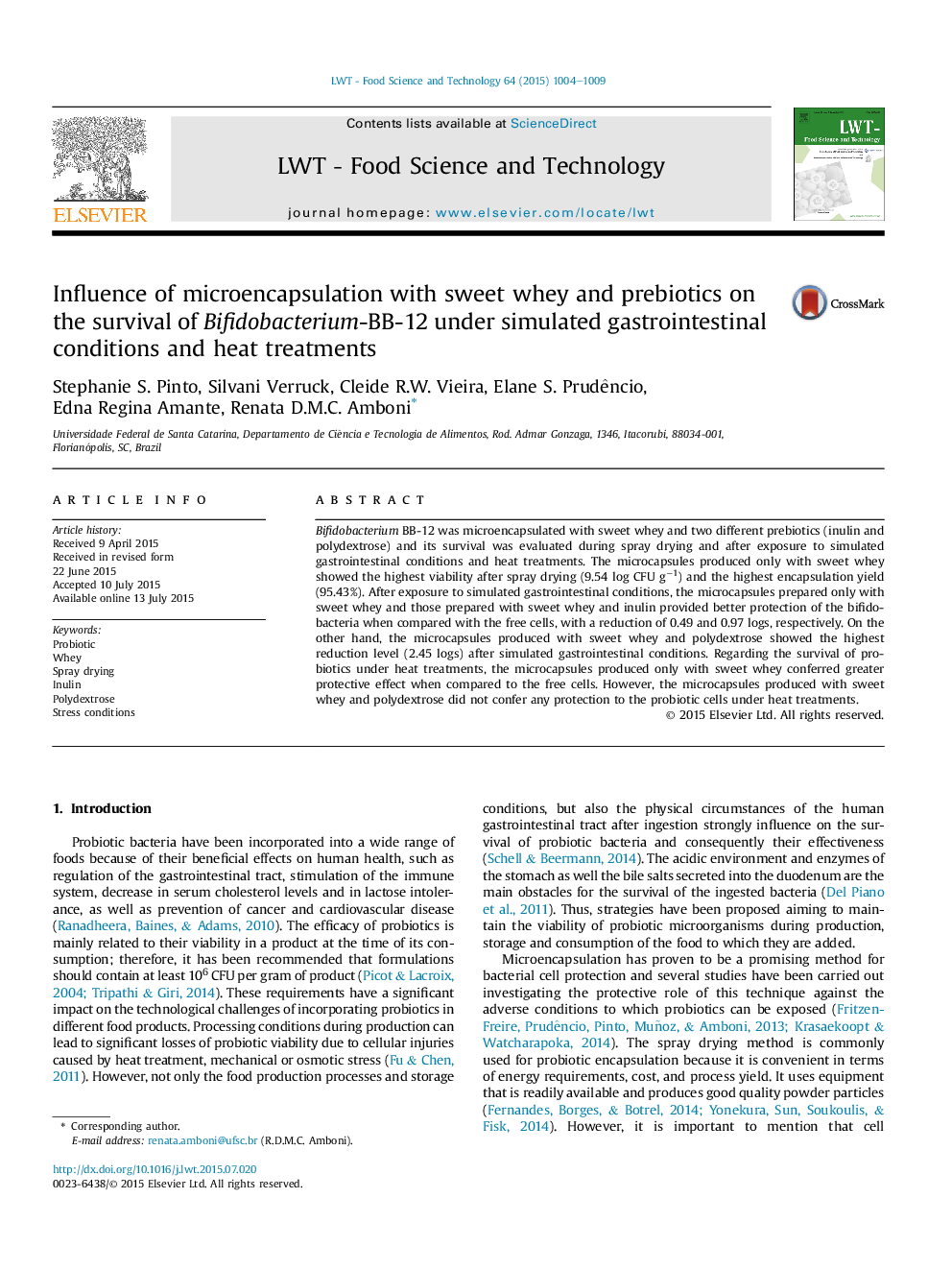| Article ID | Journal | Published Year | Pages | File Type |
|---|---|---|---|---|
| 6401874 | LWT - Food Science and Technology | 2015 | 6 Pages |
â¢Bifidobacteria was microcapsulated with sweet whey and prebiotics by spray drying.â¢The encapsulation yields were affected by the composition of the feed solutions.â¢Microcapsules containing inulin were less susceptible to acid conditions.â¢Microencapsulation only with sweet whey enhanced survival under heat treatment.â¢Microcapsules containing polydextrose did not effectively protect probiotic cells.
Bifidobacterium BB-12 was microencapsulated with sweet whey and two different prebiotics (inulin and polydextrose) and its survival was evaluated during spray drying and after exposure to simulated gastrointestinal conditions and heat treatments. The microcapsules produced only with sweet whey showed the highest viability after spray drying (9.54 log CFU gâ1) and the highest encapsulation yield (95.43%). After exposure to simulated gastrointestinal conditions, the microcapsules prepared only with sweet whey and those prepared with sweet whey and inulin provided better protection of the bifidobacteria when compared with the free cells, with a reduction of 0.49 and 0.97 logs, respectively. On the other hand, the microcapsules produced with sweet whey and polydextrose showed the highest reduction level (2.45 logs) after simulated gastrointestinal conditions. Regarding the survival of probiotics under heat treatments, the microcapsules produced only with sweet whey conferred greater protective effect when compared to the free cells. However, the microcapsules produced with sweet whey and polydextrose did not confer any protection to the probiotic cells under heat treatments.
